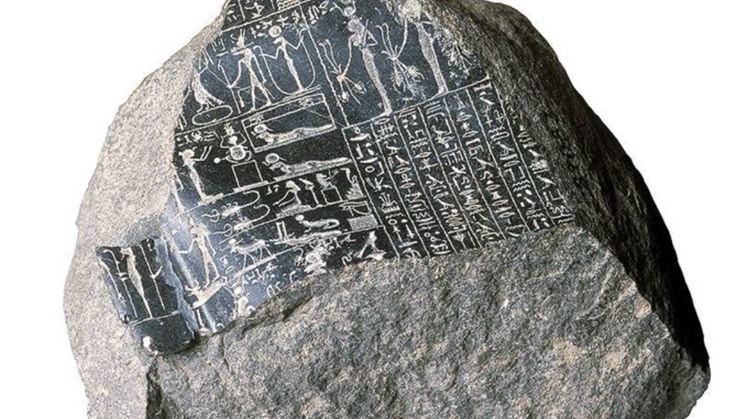The Egyptian Museum in Tahrir, one of the largest international museums, displays a large number of artifacts that exceed 50 thousand pieces, in front of visitors, and among the unique pieces in the museum is a piece of granite with magical inscriptions.
The piece in the Egyptian Museum in Tahrir dates back to the late era, Dynasty 26-30, around 522-343 BC. It was found in Tell Basta, Zagazig. It is a piece of black granite depicting a number of deities, including the goddess Isis, Where she bears the title of Her Great Magic as one of her titles.
The Egyptian Museum in Tahrir includes the largest collection of antiquities of ancient Egypt, as it contains more than 136,000 Pharaonic antiquities, in addition to hundreds of thousands of antiquities in its stores.
The Egyptian Museum consists of two floors, the ground floor of which is devoted to heavy antiquities "such as stone coffins, statues, paintings and wall inscriptions", while the upper one is devoted to light antiquities such as "manuscripts, statues of gods, royal mummies, antiquities of daily life, pictures of mummies, unfinished sculptures, statues and utensils of the Greco-Roman era, and antiquities of life beliefs." The museum also includes a huge number of Egyptian antiquities from prehistoric times until the end of the Pharaonic era, in addition to some Greek and Roman antiquities, including a group of pottery vessels (from prehistoric times). ), Narmer’s Salayah (the era of monotheism), the statue of Khasekhem (family 2), the statue of Djoser (family 3), the statues of Khufu, Khafre and Menkaure (family 4), the statue of Ka’bar and the statues of the servants (family 5), and the statue of the dwarf Seneb (family 6), And the statue of Mentuhotep Nebhepetre (11th family), the statues of Amenemhat the First, the Second and the Third (12th family), the Elka statue of King Hor (13th family), the statues of Hatshepsut and Thutmose III (18th family), the Tutankhamun group (18th family), and the Tanis treasures collection , and jamu A large group of mummies from different eras.
 Sun, Jan. 29, 2023
Sun, Jan. 29, 2023